Assistant Professor of Biology Mary Jane Epps has documented a rare method of pollination — only the third case ever recorded — in the Appalachian Mountains of Virginia. Epps and remarkable footage of her discovery were featured on “Sex, Lies, and Butterflies,” an episode of Nature that aired April 3 on PBS.
It all started with a basic question: what pollinates flame azaleas?
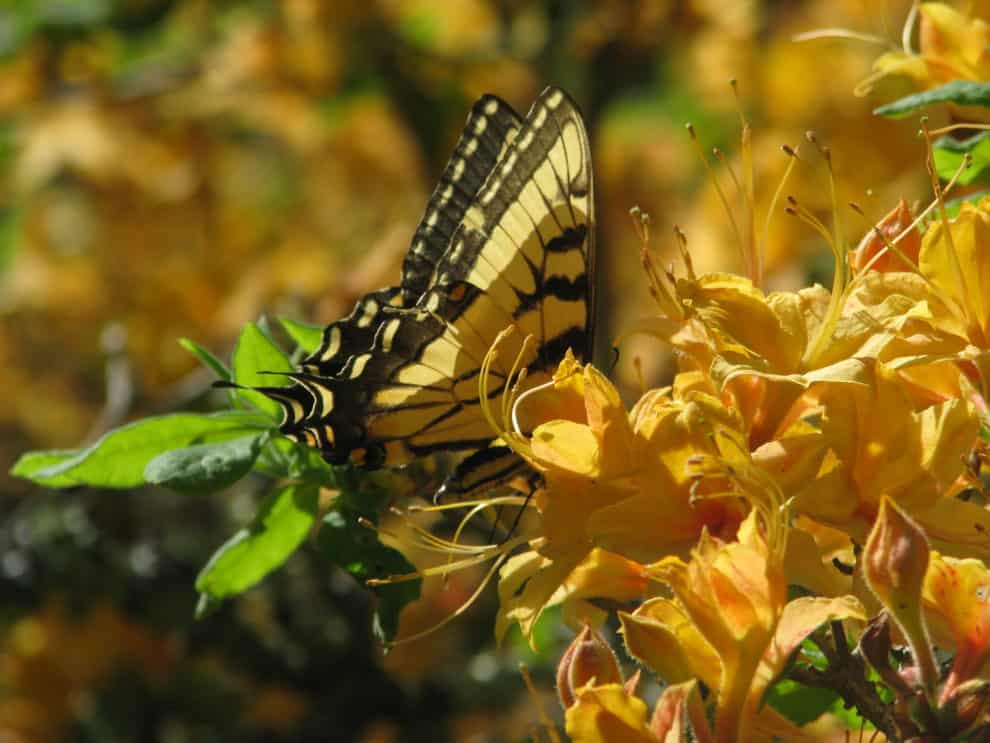
Blooming late spring through mid-summer, azalea blossoms bring bright yellow and orange to the mountain ridges. These flowers are magnets to pollinators, but they are also deceptive.
“I found an unusual thing,” Epps said. “Lots of insects come to azaleas, but I noticed that a lot of them weren’t making contact with both the male and female parts of the blossom, which is necessary for reproduction.”
Epps tackled this botanical mystery starting in 2012, and her research at Mountain Lake Biological Station in Giles County is ongoing. This summer, MBU student Tatyana Johnson will also work at the field station on an expansion of the project.
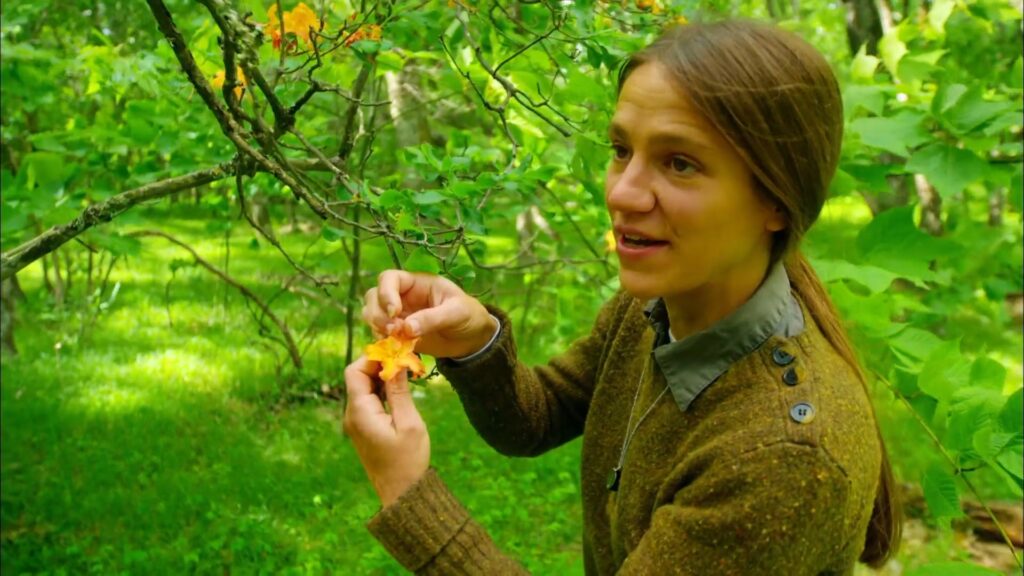
Mary Jane Epps describes the flame azalea’s structure. Photo courtesy of PBS Nature and Coneflower Studios.
“Azaleas have a weird structure,” she said. “Small insects can duck under the reproductive parts. There’s a size mismatch between the male anthers and female stigma, so bees can make contact with pollen, but never deposit it on the female part. The only pollinator making contact with both parts were the big butterflies.”
Following this lead, she set up a follow-up experiment: by caging azalea plants, she controlled what insect species gained access to the plants and excluded different types of pollinators. “For example, I would let in small-bodied insects, but exclude the big butterflies. These plants had a total failure in fruit set.”
As the big butterfly drinks nectar from the blossom, its wings beat against the male reproductive organ of the plant and release chains of pollen. With another wing beat, the butterfly deposits pollen on the female part. And there it is: reproduction. Fruit forms, seeds develop, and more bright yellow blossoms dot the woodlands next spring.
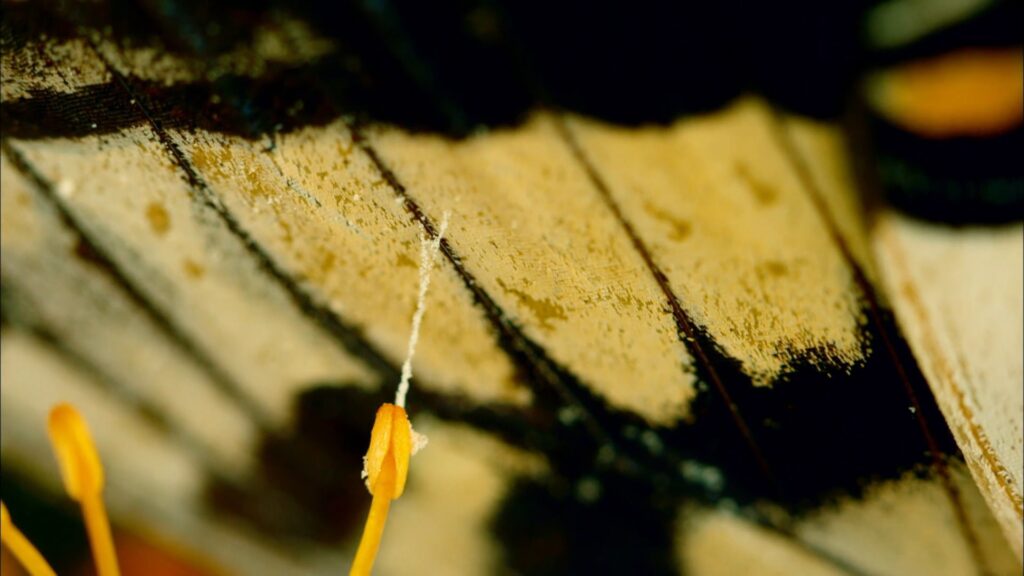
The butterfly’s wing releases a strand of pollen. Photo courtesy of PBS Nature and Coneflower Studios.
“Butterflies hit all the parts of the blossom with their big wings,” she said. “And some butterfly species are more flap-happy than others, like the swallowtail, with every wing flap it pollinated really well. So there are differences in how effective pollination is, even among the butterflies.”
Epps had identified her pollinator, the eastern tiger swallowtails’ wings, an essential partner in the survival of the flame azalea.
Award-winning actor and Nature narrator Paul Giamatti summed up the discovery as “a true surprise — it’s just the third case of wing pollination ever recorded.”
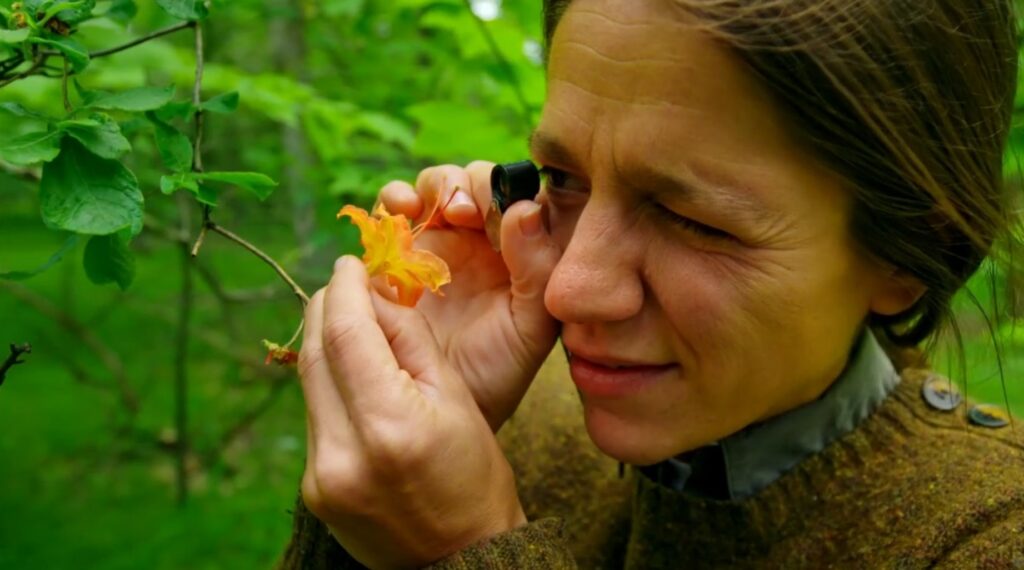
Mary Jane Epps looks closer at blossom anatomy. Photo courtesy of PBS Nature and Coneflower Studios.
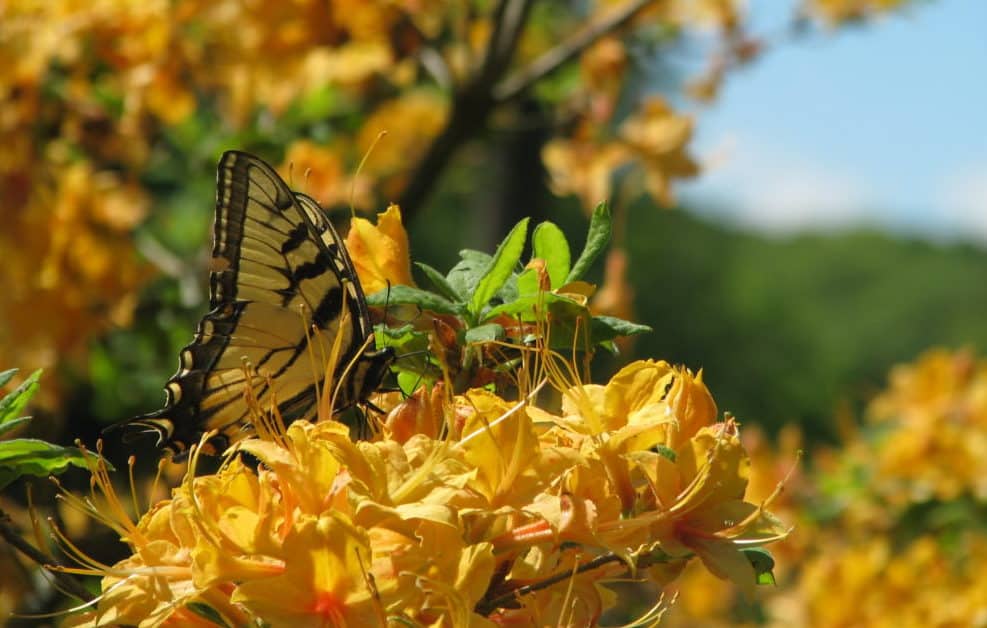
A swallowtail butterfly visits the flame azalea. Photo courtesy of Mary Jane Epps.